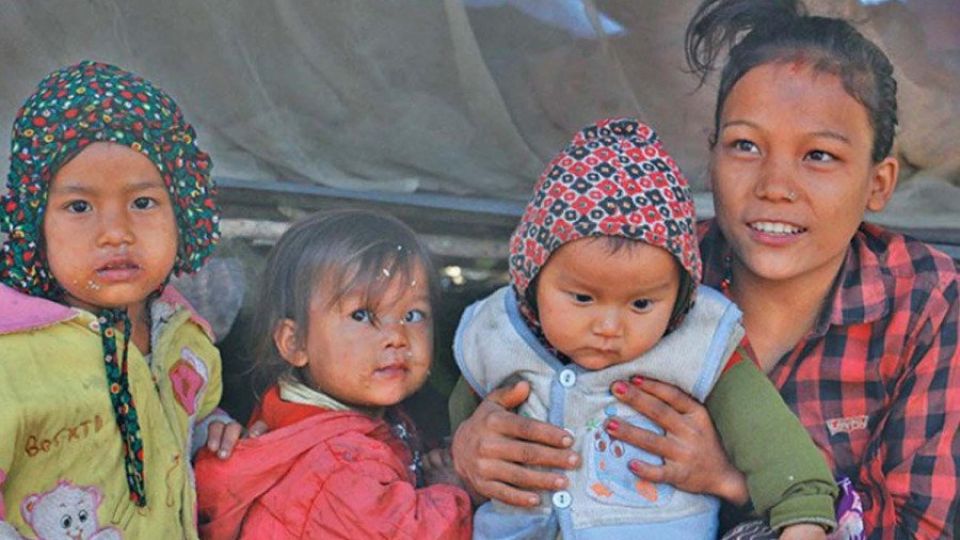December 16, 2022
KATHMANDU – Binita, who is 18, is a single mother to a three-year-old boy. She was married at the age of 14 and gave birth a year later. Two years later, she separated from her husband.
“My son and I have been living with my mother after my husband left us,” said Binita, who the Post is identifying with a pseudonym for privacy reasons.
After she got married when she was in the sixth grade, she gave up her studies. Neither her parents nor her in-laws encouraged her to continue school. In fact, her in-laws asked the couple to find their own accommodation as the couple did not have any income and were considered a burden to the household.
Binita’s story is playing out across the length and breadth of Nepal, which has one of the highest prevalence of child marriage and early pregnancy in Asia. Reports suggest that the practice of child marriage is more widespread in remote villages, but it is also very much present in slums and outskirts of big cities including the capital Kathmandu.
A recent report, ‘Nepal Demographic and Health Survey-2022’, carried out by the Ministry of Health and Population, shows that overall, 14 percent of women aged 15–19 have been pregnant, including 10 percent who have had a live birth while two percent experienced a pregnancy loss.
According to the report, teenage pregnancy is the highest in Karnali Province (at 21 percent), followed by Madhesh Province (20 percent). Of the total pregnancies in Bagmati Province, eight percent are teenage pregnancies, the report shows.
Binita’s family, originally from Ramechhap district, has for years been residing in Tarakeshwar Municipality of Kathmandu. Binita and her ex-husband had eloped and married at a local temple in the municipality to avoid legal hassles.
According to Nepal’s Civil Code, the minimum age for marriage for both women and men is 20. As per Article 173 of the Criminal Code, a person found guilty of either committing or arranging a child marriage is subject to a jail term of up to three years and a fine of Rs30,000.
Binita and her ex-husband did not legalise their marriage fearing penalisation. As in most cases of child marriage, this allowed Binita’s husband to shrug off all responsibilities to his wife and child and made it easier for him to abandon them.
Binita’s husband started abusing drugs and then assaulting her, she said. “Instead of providing for our son, he started beating me up, questioning my intentions with other men,” she added. “There was no option for me but to let him go.”
Binita said she has now realised that the decision to get married early and discontinue education has ruined her life and affected the future of her child.
The decision to quit school might be one of the contributing factors to early pregnancy in young girls, suggests the Health Ministry survey. The report states that 33 percent of girls aged between 15-19 years with no formal education are more likely to start childbearing earlier than those with at least some secondary education, which stands at eight percent.
The lack of education and job opportunities coupled with the burden of raising a family prevents young couples from breaking the cycle of poverty. When Binita and her husband left her in-laws’ house, they took shelter with Binita’s mother. Her mother rented a room for the couple and their child, but they soon had to vacate the room after they could not pay rent. They later moved back in with her mother.
Binita’s mother leads a hard life herself, working as domestic help in several homes for a living.
“My father is a drunkard, so the responsibility of running the household rests on my mother who works hard every day,” Binita told the Post recently. “The father of my child turned into a drug addict. I often feel helpless thinking about the future of my son.”
Child marriage is one of the biggest social problems in Nepal, fuelled further by poverty, lack of education and access to good health services.
“Chances of one entering into a vicious cycle of poverty are higher if one gets married early and starts bearing children early,” said Dr Kiran Regmi, former Health Secretary.
“Entire families and a generation have to face consequences of child marriage.”
In Binita’s case, poverty and lack of education played a major role in the choice she made. Binita’s mother did not object to her 14-year-old daughter getting married as she was having a tough time feeding the family of five. The neighbours and society at large did not see the marriage as problematic since it was a common-enough occurrence.
“Given how common child marriage is in our society despite its illegal status, many do not see any fault in it,” said Regmi.
Last year, Binita’s younger sister eloped with her boyfriend. She was only 13 years old. She has not stayed in touch with her family since, says Binita.
Experts say a multisectoral approach is needed to understand and eradicate this multifaceted social evil.
Dr Naresh Pratap KC, executive director at the Family Planning Association, said these problems—early marriage, teenage pregnancy, school drop out, violence against women, malnutrition, lack of women empowerment, and sexual diseases—will not be addressed unless there is increased investment in education and awareness programmes.
“Our education system also must play a part in sensitising young children about the evils of early marriage,” KC said. “Alongside regular curriculum, the schools also must focus on imparting sex education to the impressionable minds.”
KC calls for coordination, cooperation and commitment among concerned agencies to eradicate child marriage and early pregnancy that has been plaguing Nepal—where child marriage was abolished in 1963—for decades now.


